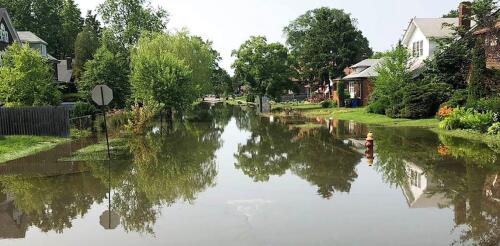Flood maps
In 2021, metro Detroit was hit with a rainstorm so severe that President Joe Biden issued a major disaster declaration at state officials’ request. Nearly 8 inches of rain fell within 24 hours, closing every major freeway and causing massive damage to homes and businesses. The storm was of a severity historically seen in Detroit every 500 to 1,000 years. But over the past decade, the region has experienced several other storms only slightly less destructive, one in August 2023. As the planet warms, severe rains – and the flooding that follows – may become even more intense and frequent in cities like Detroit that have aging and undersized stormwater infrastructure. These extreme events put enormous pressure on communities, but low-income urban neighborhoods tend to suffer the most I am a geomorphologist at the University of Michigan-Dearborn specializing in urban environments, water, historical mapping and flood-risk equity. My recent research, conducted...
Heavy downpours and a thick snowpack in the Western mountains and Upper Midwest have put communities in several states at risk of flooding this spring – or already under water. Flooding is the costliest type of natural disaster in the U.S., responsible for about 90% of the damage from natural disasters each year. It happens almost every day somewhere in the country. Yet, much of the aging infrastructure meant to protect U.S. communities is in bad shape and, in some cases, failing. The American Society of Civil Engineers gave the nation’s dams, levees and stormwater infrastructure a D grade in its latest report card, in 2021. Help is coming. Congress authorized billions of dollars for infrastructure projects under the Infrastructure Investment and Jobs Act in 2021. But there’s a problem: New infrastructure planning frequently relies on historical flood patterns for its benchmarks rather than forecasts of changing risks as the climate warms. We study flood ris...
The extreme flooding and mudslides across California in recent weeks took many drivers by surprise. Sinkholes swallowed cars, highways became fast-moving rivers of water, entire neighborhoods were evacuated. At least 20 people died in the storms, several of them after becoming trapped in cars in rushing water. As I checked the forecasts on my cellphone weather apps during the weeks of storms in early January 2023, I wondered whether people in the midst of the downpours were using similar technology as they decided whether to leave their homes and determined which routes were safest. Did they feel that it was sufficient? I am a hydrologist who sometimes works in remote areas, so interpreting weather data and forecast uncertainty is always part of my planning. As someone who once nearly drowned while crossing a flooded river where I shouldn’t have, I am also acutely conscious of the extreme human vulnerability stemming from not knowing exactly where and when a flood will st...


